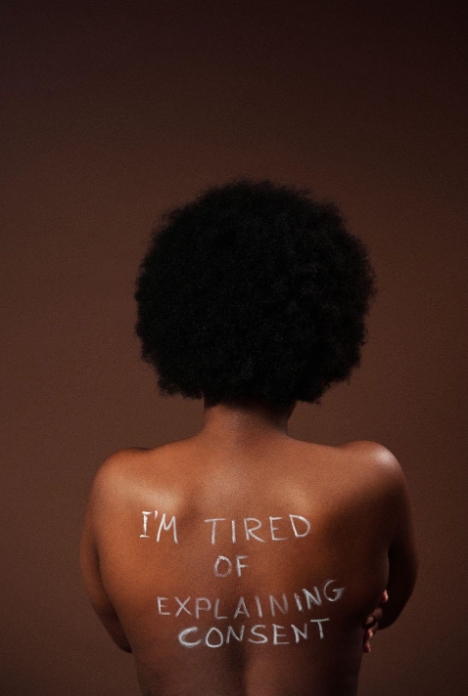Content Warning: This article includes reference to acts of sexual assault and unwanted sexual advances, such as groping, inappropriate touching, and rape. Reader discretion is advised.

Sexual assault and violence is the occurrence of non-consensual sexual act committed against an unwilling individual. Sexual assault can take many forms and range from offences like unwanted touching to rape. Recently, the #MeToo movement has brought more awareness to sexual assault by providing a space for survivors to speak up and share their stories. Through the power of people sharing their stories, others are empowered to speak up, creating a more inclusive culture and environment, fostering more support and empathy for survivors. This is an important step in the prevention of sexual assault because people become aware of how frequent these harmful offences occur. This becomes an opportunity to educate people about the harm of sexual assault and creates space for a conversation to be had about the societal influences and values that uphold and allow for sexual assault to occur. Education is one of the most important tools to combat sexual assault because the more knowledge we have, the easier it is to spot, avoid, and prevent entirely. It is estimated that one out of five women worldwide will be a victim of rape or attempted rape over the course of her life1. For this reason, individuals must be aware of how to reduce their risk of being assaulted. However, it is important to note that these tips are here simply to be used as guidelines to help avoid assault—even though a person can do things to improve their odds, they should never be held responsible. The fact that we feel the need to give these tips is the mark of a society where sexual assault is common.
While women are more at risk for being sexually assaulted, it is a common misconception that men do not get assaulted or harassed. Sexual assault can be excused by some people under the belief that it occurs because of lust and passion that is out of an individual’s control. This misconception plays into men being the typical perpetrator of sexual assault more often than women. Men are believed to be more sexual beings, and that they cannot possibly find sexual activity to be unwanted or unpleasant. This also perpetuates the belief that men are meant to be hypersexual and creates a vicious cycle where men then feel empowered to take advantage of women because they are socialized to do so as well as the that discourages male survivors from speaking up or reporting assault because they are made to believe themselves that it is not a problem.
Understanding Societal Influences and Values that Encourage the Prevalence of Sexual Assault

Living in a patriarchal society that prioritizes men and demonizes women, this greatly affects the frequency of sexual assault, the motivations behind it, and the prevention of it. One of the ways that hegemonic masculinity – the practice that supports stereotypically masculine behavior and upholds patriarchal standards while actively subordinating women and feminine behavior – manifests itself is through sexual scripts. Sexual scripts are the ways that men and women are socialized to act in sexual situations. Men are taught to actively pursue their desires and act aggressively in order to achieve or obtain this, while women are meant to act timid and hesitant, letting men take control. The socialization of genders and gender norms also interact with sexual scripts, women being less likely to be assertive, as women are expected to be accommodating and compliant, resulting in it being difficult for women to withstand pressure to engage in a sexual act.
For men, their sexual script encourages them to pursue what they want without consequence. They believe they are entitled to what they want and do not see how problematic this can become. “The…sexual script reflects the relational construction of gender as a category of inequality, often positioning men as sexual aggressors and women as targets of men’s aggression,” 2 .Since women are perceived to be coy and submissive in sexual situations and often ‘play hard to get’, men think that they are meant to try harder in order to obtain what they want. There is no sense of boundaries as the consequences of violating someone’s personal space do not even come to mind – men do not see what is problematic with their behavior because they already feel entitled to it and are encouraged to apply even more pressure through societal standards and gender norms.
The coupling of the expectation of women being expected to remain polite, submissive, and accommodating with the expectation of men aggressively pursuing what they want and stopping at virtually nothing to obtain it, is a recipe for disaster. Since pornography is one of the most common sources of “sexual education”, it plays into the socialization of men and women, as well as the development of their sexual scripts. “Content analysis of top-selling pornographic DVDs, for example, finds that over 88% of scenes involve acts of physical aggression and over 48% involve verbal aggression, principally name-calling. While 70% of the aggressors were men, nearly all targets were women who, most often, expressed pleasure at the aggression.”2 Men should be educated about proper boundaries and the hegemonic masculinity that they perpetuate, meanwhile women should be expected to stand up for themselves more often and not feel afraid of the consequences of not being totally accommodating and subservient to the patriarchy.

When observing the frequency of sexual assault under a queer lens, similar patterns of misogyny emerge. Gay men are more likely than heterosexual men to be assaulted because they are a sexual minority. The subordination and disrespect for femininity is a huge factor in sexual assault as male perpetrators can subconsciously associate weakness with femininity, making gay men more likely to be victimized. There is also a common misconception that sexual assault among same-sex relations does not occur. This is perpetuated by the stereotype that gay men are very promiscuous and should enjoy the sexual contact that they would be engaging in.
On another note, men who are survivors of sexual assault are often overlooked as they are discouraged from reporting that the assault even occurred. This is indicative of a society that places great value on masculine behavior and associates weakness with showing emotion and femininity with vulnerability. In order to be a respected man, they must not show any signs of being exposed and vulnerable. Sexual assault among men is common and often not paid attention to because men are supposed to be able to “handle it” and are expected to enjoy any sexual contact that they might find themselves in, making it hard for men to turn down their partner’s incessant requests to engage in sexual activity.
How do I reduce my risk for assault?
First and foremost, the burden to avoid or prevent sexual assault should not be on the victim. It is important for the survivor to also not blame themselves because even the most prepared and educated person can be sexually assaulted.
Contrary to popular belief, the majority of rape is committed by someone the victim knows. When the rapist is someone known to the victim, such as a date or a friend, it is called date rape or acquaintance rape. About 80% of rapes that occur in the United States are some form of acquaintance rape3. The perpetrator can even be a partner, spouse or family member. Therefore, one should consider the level of intimacy that they desire with someone and lay out clear limits and boundaries early. Below are some tips on how to do that.

At the same time, you should take care to determine whether you should try to instigate sexual intimacy with a partner or an acquaintance. Communication between potential romantic partners can be difficult, and misunderstandings can happen. What one person thinks is consensual may not match up to another person’s perception of the situation. This ties into the ideals that women are supposed to live up to, and how sexual assault can be very common. It is often very difficult to speak up in the moment and women are socially trained to remain passive and not advocate for themselves or their needs. In this case, passivity can be taken as permission to engage and allow the perpetrator to assault, whether they are unaware or not that the person does not consent. Coupled with men expected to comply with their social script to be aggressive and dominant, they may misread their partner’s passivity and hesitance for going along with their sexual scripts and assume nothing wrong. For this reason it is important to fully communicate one’s desires beforehand, making sure to be especially careful when alcohol or drugs are involved. Do not rely on a person’s actions or body language alone, because this can be misinterpreted. Affirmative consent is necessary to engage in a sexual act so that all the people involved are aware what they are getting into. It is also crucial to continuously check in on yourself and your partner when engaging in sexual acts because consent for one thing does not translate to consent to everything.
It is important to be aware of consent laws. Consent laws dictate that a victim cannot legally consent to sexual contact if he or she is violently coerced, intoxicated, below the age of legal consent (which varies by region) or is mentally disabled4. When in doubt, always ask your partner whether he or she is comfortable with what is going on.
While there is no sure way to protect yourself from sexual violence, there are certain measures you can take to protect yourself and others:
- Examine your feelings about sex and know where your boundaries are. Then it is less likely that you will be swept away at some moment later in time.
- Set sexual limits. Stick to these limits and remember that no one can tell you where your limits are. This is a decision that you must make, and no one should influence your decisions or force you to go further than you want to.
- Don’t give mixed signals. Be very clear about what you do and do not want. State your desires clearly. Instead of saying “I don’t think so”, say “NO! I don’t want to do this.”
- Do not do anything you do not want to to avoid unpleasantness. If a person does not respect your feelings and boundaries, then they are someone you do not want to become intimate with anyway.
- You are never obligated to have sex with someone, and you have the right to cease sexual activity even after it has already started.
- Exercise caution when getting into a situation where you are alone with someone who you do not know or trust.
- Be aware of your surroundings at all times. Stay near other people for safety.
- Avoid secluded areas and be careful when you invite someone into your home or go into theirs.
- Be aware that alcohol and drugs are related to rape and assault and be cautious in situations that contain these substances.
- Don’t leave your beverage unattended or accept an open container, potentially allowing it to be tampered with.
- If you are going out with a friend, stay with a group of people, arrive together and leave together and watch out for one another while you are out.
- Trust your instincts.
- If things begin to get out of control, do not be afraid to just leave.
- Have your own transportation (if possible) or at least enough money for a taxi.
- And finally, know yourself. If you don’t feel that you can trust yourself in certain situations, don’t let yourself get into them. Know your values and attitudes about power, sex, and love. Avoid falling for lines such as, “But I love you”. And if you know that you do fall for these lines, make sure that you do not put yourself in a situation without an easy escape.
Concluding Remarks

Although it is imperative that people educate themselves about sexual assault, the burden to avoid and prevent sexual assault should not be on potential victims of it. This is indicative of a greater sociological issue where the systems that we exist in uphold patriarchal values that perpetuate instances of sexual violence. The most important tips to remember to help you actively thwart sexual assault are being assertive and making your needs, limits, and boundaries clear while also educating yourself and others about the factors that contribute to the prevalence of sexual assault.
Resources
The following resources are available to help survivors of sexual assault and their loved ones.
Rape Abuse and Incest National Network (RAINN)
RAINN is committed to aiding survivors of assault through counseling services and the creation of the National Sexual Assault Hotline that is available 24/7. RAINN also provides services to prevent sexual assault, assist survivors, and bring perpetrators to justice.
National Sexual Assault Hotline: (800) 656-4673
Website: https://www.rainn.org/national-resources-sexual-assault-survivors-and-their-loved-ones
National Sexual Violence Resource Center (NSVRC)
NSVRC is a national network of community-based crisis centers and local organizations that address and meet the needs of survivors of sexual assault. “While the specific services available vary by location, services are confidential and may include advocacy, accompaniment during medical exams and law enforcement interviews, education, follow-up services, and referrals to other resources.”
Website: https://www.nsvrc.org/find-help
References
1. Cybulska, Beata, and Greta Forster. “Sexual Assault: examination of the victim.”Medicine 38.5 (2010): 235. Web. 14 Apr 2011. <http://www.sciencedirect.com/science?_ob=ArticleURL&_udi=B82YB-4YYH3XY-9&_user=112642&_coverDate=05%2F31%2F2010&_rdoc=1&_fmt=high&_orig=gateway&_origin=gateway&_sort=d&_docanchor=&view=c&_acct=C000059608&_v>.
2. Bridges, Ana J., et al. “Sexual Scripts and the Sexual Behavior of Men and Women Who Use Pornography.” Sexualization, Media, & Society, vol. 2, no. 4, 2016, p. 237462381666827., https://doi.org/10.1177/2374623816668275.2. Bruess, Clint E., Conklin, Sarah C, and Greenberg, Jerold S. (2011) Exploring the Dimensions of Human Sexuality. Sudbury, MA: Jones and Nartlett Publishers, LLC.
3. Bruess, Clint E., Conklin, Sarah C, and Greenberg, Jerold S. (2011) Exploring the Dimensions of Human Sexuality. Sudbury, MA: Jones and Nartlett Publishers, LLC.
4. Gray, Sheri. “What is Sexual Assault?.” SexLaws.org. N.p., 2009. Web. 17 Apr 2011. <http://www.sexlaws.org/what_is_sexual_assault>.
5. “Preventing Sexual Violence” |Violence Prevention|injury Center CDC. Centers for Disease Control and Prevention, Centers for Disease Control and Prevention, 5 Feb. 2021, https://www.cdc.gov/violenceprevention/sexualviolence/fastfact.html.
6. Holtzman, M., & Menning, C. (2015). A New Model for Sexual Assault Protection: Creation and Initial Testing of Elemental. Journal of Applied Social Science, 9(2), 139–155. https://www.jstor.org/stable/26370921
7. Edwards, K. M., Turchik, J. T., Dardis, T., Reynolds, N., & Gidycz, C. A. (2011). Rape myths: History, individual and institutional-level presence, and implications for change. Sex Roles, 65, 761-773
Last Updated: 3 March 2022
